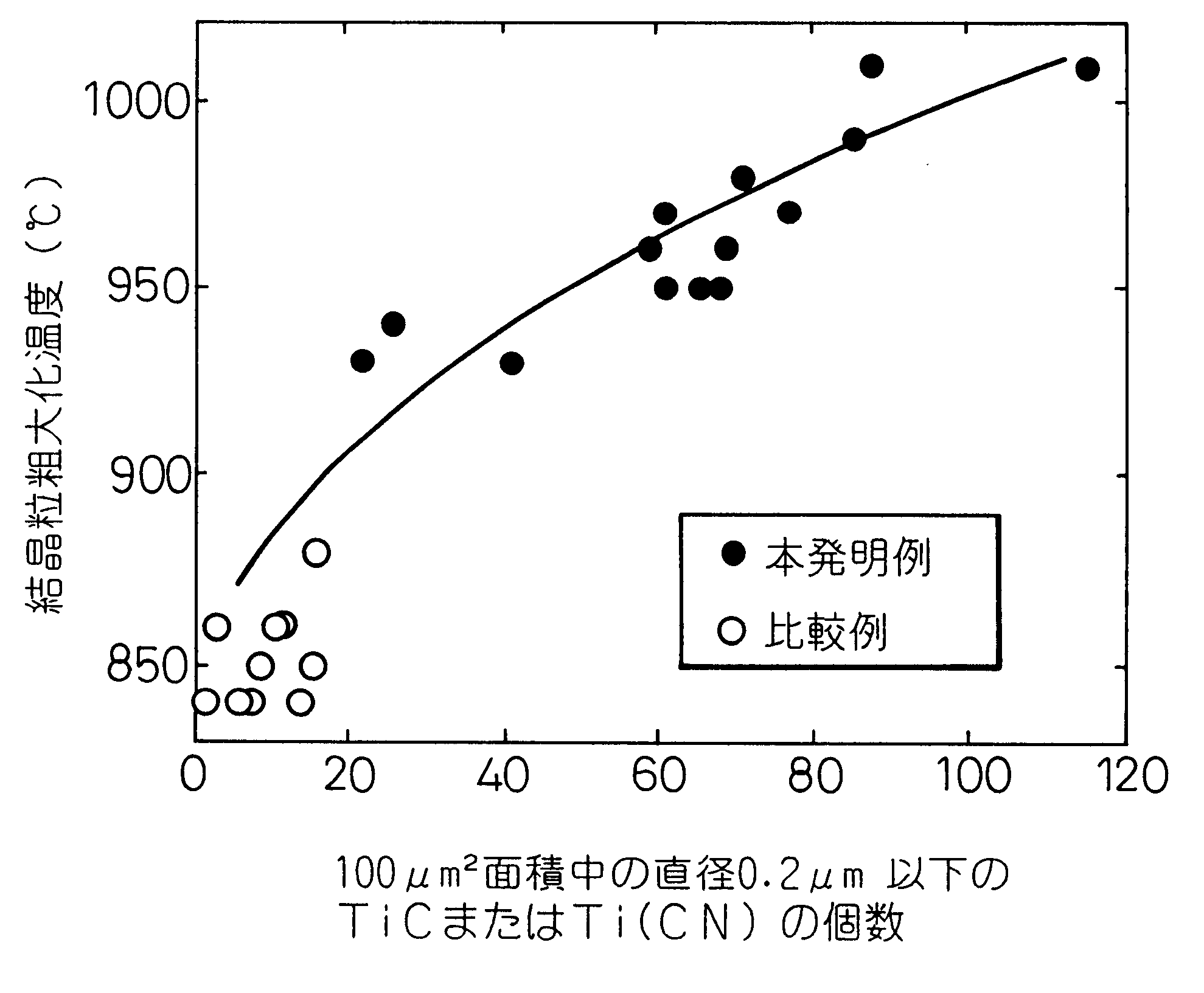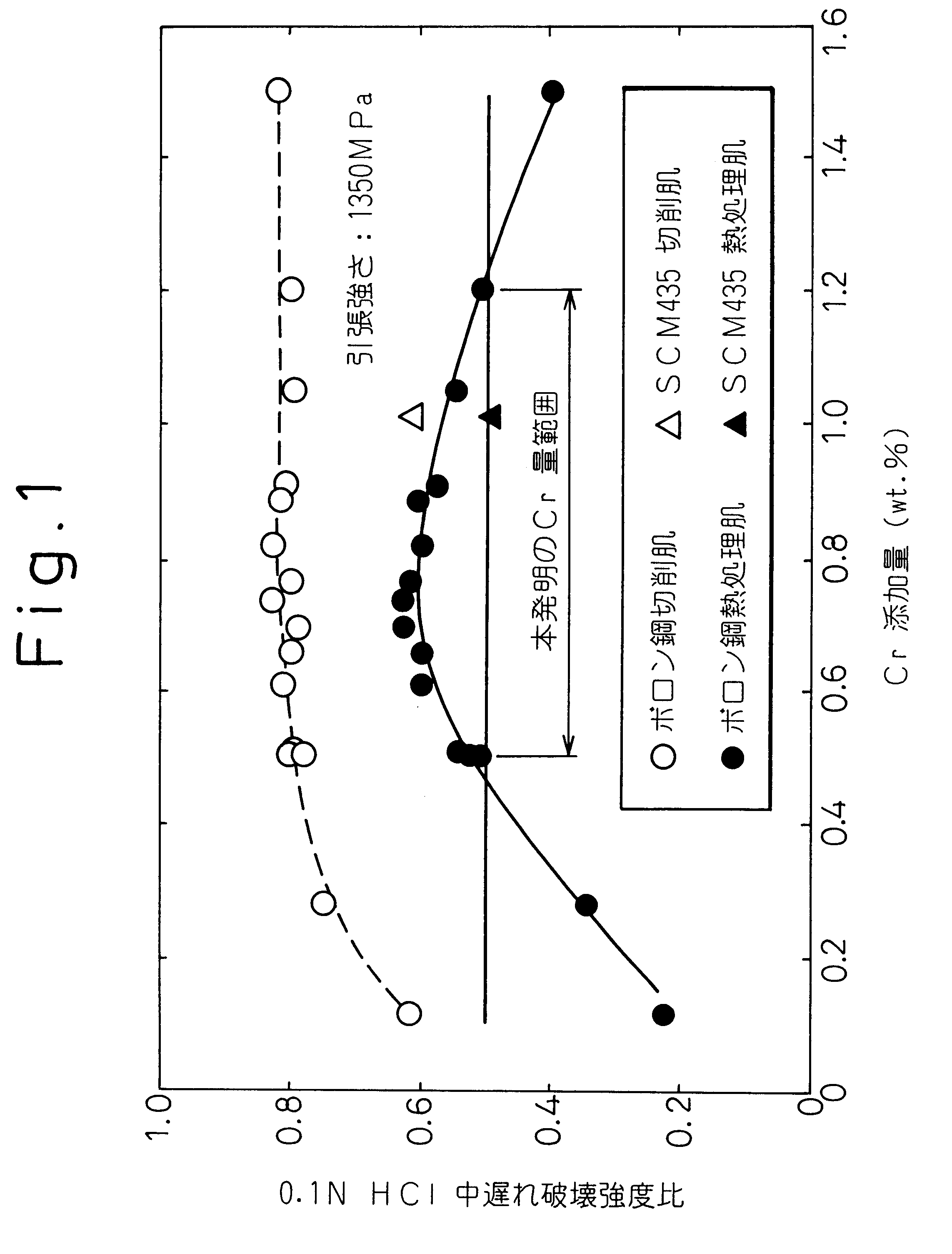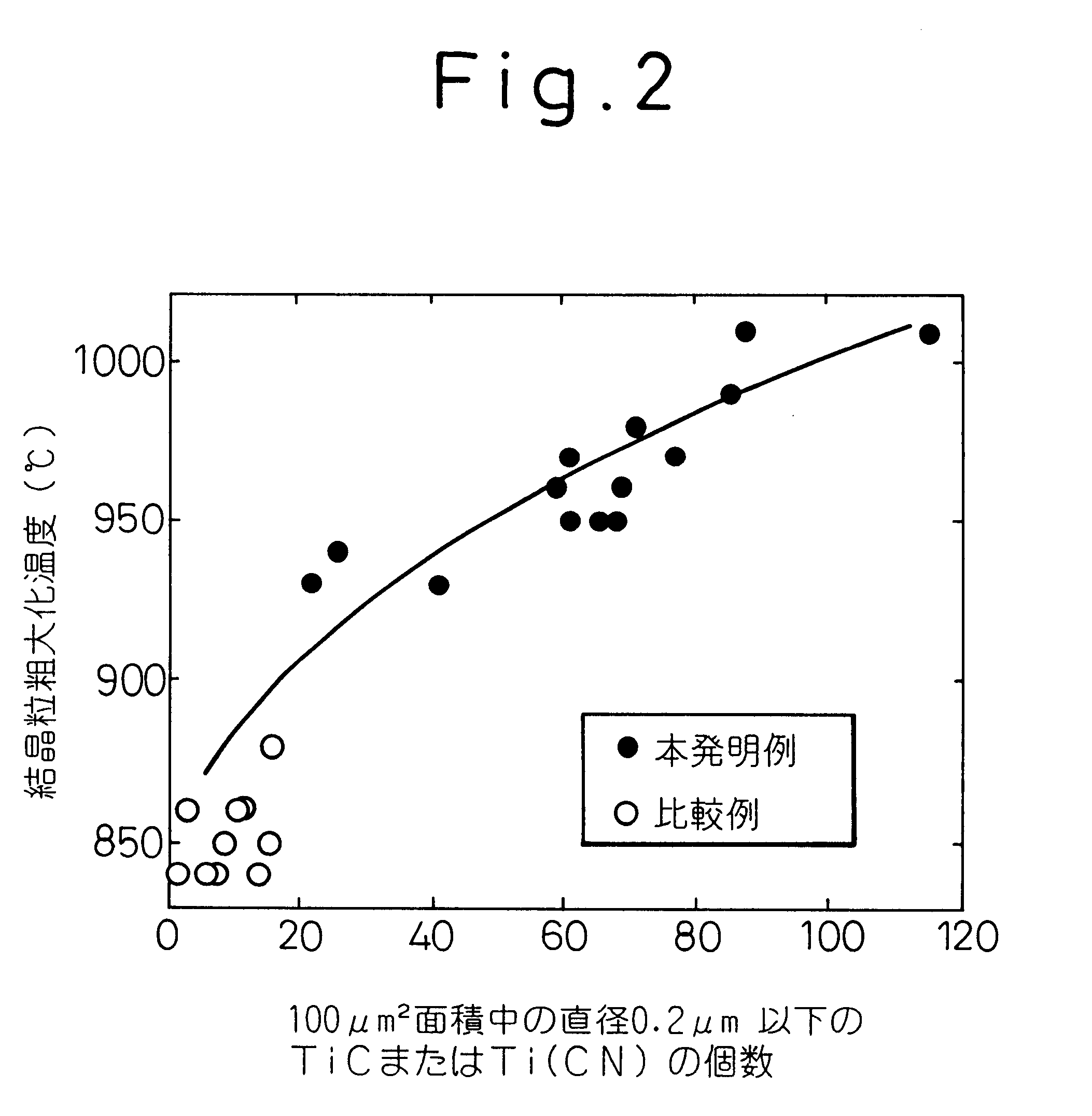This is because the high as-rolled
hardness of medium-carbon carbon steels and
alloy steels like those listed above is a cause of various production-related problems, including high cost owing to heavy wear of the cold forging tool during the shaping of components such as bolts and occurrence of
cracking during component shaping owing to the low
ductility of the blank.
As annealing involves considerable energy, labor and equipment costs, however, a need is felt for a material and process that enable omission of the annealing step.
Although addition of a small amount of
boron (B) improves the quench-hardening performance, this effect is lost when N is present in the steel in
solid solution because the B combines with N to form BN.
Since low-carbon
boron steels are low in C and alloying elements, however, they sustain a decline in delayed fracture property when subjected to heat treatment for achieving a tensile strength of 1000 MPa or higher.
It is known that an attempt to obtain high strength by conducting low-temperature
tempering results in degraded delayed fracture properties.
However, when the amount of added C is increased or an SCR, SCM or other such
alloy steel is used in order to secure high strength and bring the delayed fracture strength up to a practical level even with high-temperature
tempering, the resulting increase in the steel
hardness makes it impossible to eliminate the annealing step.
But this degrades the delayed fracture strength and causes problems from the practical aspect.
Application to high-strength products is therefore difficult.
However, when the steel was used to fabricate a component on an actual
production line, and the delayed fracture property was evaluated from the heat-treated surface condition, it was found that the
boron steel component was inferior to an
alloy steel in delayed fracture property.
The technology taught by JP-A-8-60245 is therefore limited in its ability to respond to the need for higher strength components.
In addition to the foregoing problems, a boron steel is also more likely than an annealed steel to sustain abnormal coarsening of specific
austenite grains during heating for quench-hardening.
A component that has experienced grain coarsening is liable to have low
dimensional precision owing to quench-hardening
distortion, reduced
impact value and fatigue life, and, particularly in a high-strength component, degraded delayed fracture property.
However, it is not possible to prevent grain coarsening merely by defining composition because the TiC cannot be finely dispersed.
However, prevention of grain coarsening cannot be achieved unless the TiC, Ti(CN)
precipitation condition is optimized before heating for quench-hardening.
When pinning particles precipitate during heating for quench-hardening, however, the amount of TiC
precipitation is affected by the heating rate during heating for quench-hardening or heating for carburization.
As this makes the expression of the pinning effect unstable and, even when the same material is used, a
high probability arises of the coarsening prevention being degraded by a mere change in component size or the heat-treatment furnace.
A problem therefore persists regarding quality stability in actual production.
The aforesaid conventional methods cannot achieve a delayed fracture property of the actual component equal to or better than that of an
alloy steel when the annealing or spheroidization annealing step before cold forging is omitted and heat treatment is conducted for imparting high strength.
It also degrades cold forgeability by increasing hardness.
At a content of less than 0.30%, its effect is insufficient, and at a content greater than 1.00%, it degrades cold forgeability by increasing hardness.
Sulfur (S) is an element that promotes
cracking during cold forging and therefore degrades cold forgeability.
Ti is therefore an element effective for enhancing the quench-
hardenability improving effect of B. However, these effects are insufficient at a content of less than 0.020% and saturate at a content exceeding 0.100%.
Under heating conditions of a temperature lower than 1050.degree. C., TiC, Ti(CN), NbC, Nb(CN) and (Nb, Ti)(CN) cannot once be put into
solid solution in the matrix, making it impossible to obtain a steel having one or more of TiC, Ti(CN), NbC, Nb(CN) and (Nb, Ti)(CN) finely precipitated therein after hot rolling.
Moreover, when much coarse TiC, Ti(CN), NbC, Nb(CN) or (Nb, Ti)(CN) that could not enter
solid solution remains, it degrades the
ductility of the component and has an
adverse effect on the delayed fracture property.
Under cooling conditions exceeding 2.degree. C. / s, the time period of passage through the
precipitation temperature ranges of TiC, Ti(CN), NbC, Nb(CN) and (Nb, Ti)(CN) is too short to obtain a sufficient amount of precipitation and, as a result, it becomes impossible to obtain a steel containing a large quantity of finely precipitated TiC, Ti(CN), NbC, Nb(CN) and / or (Nb, Ti)(CN) effective as pinning particles.
In addition, a rapid
cooling rate increases the hardness of the rolled material.
 Login to View More
Login to View More 


